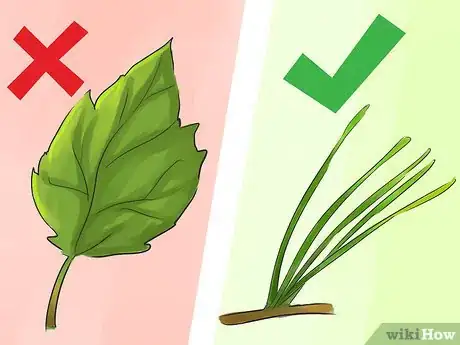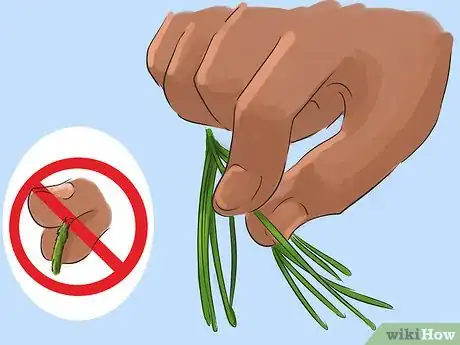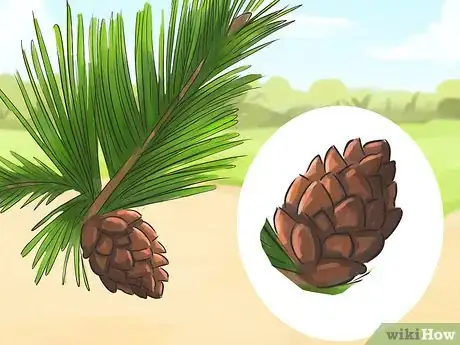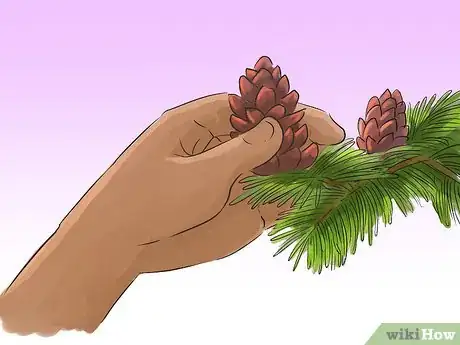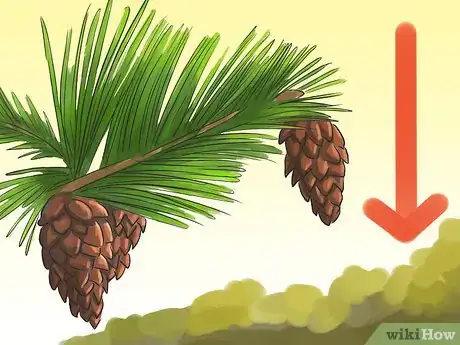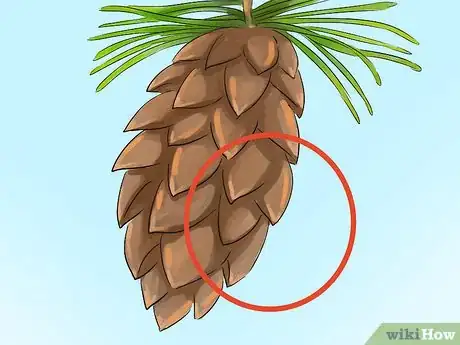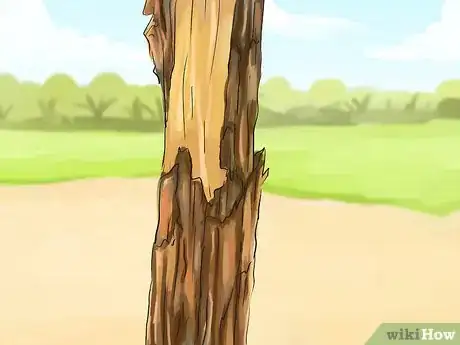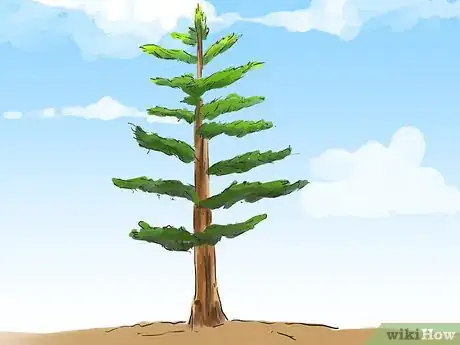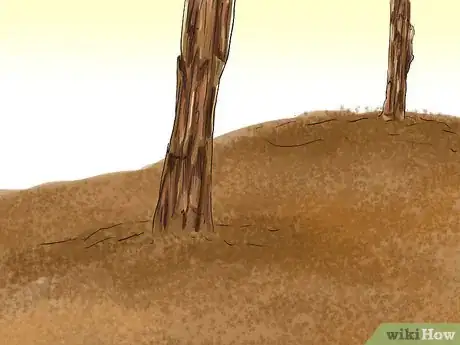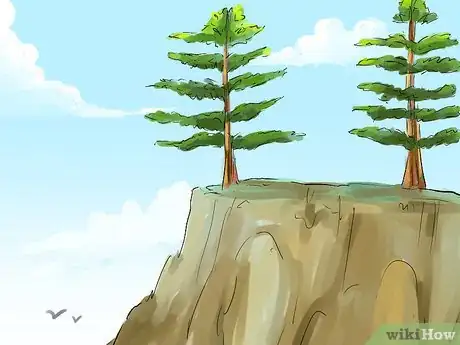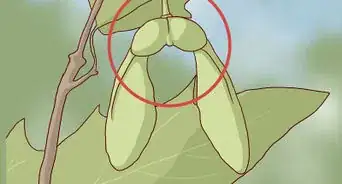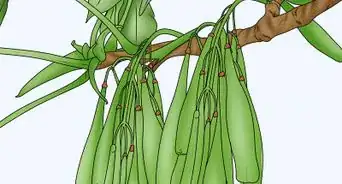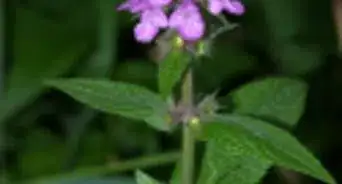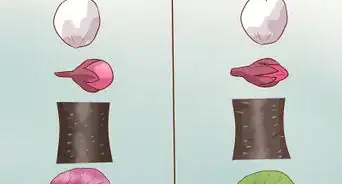This article was co-authored by Michael Simpson, PhD. Dr. Michael Simpson (Mike) is a Registered Professional Biologist in British Columbia, Canada. He has over 20 years of experience in ecology research and professional practice in Britain and North America, with an emphasis on plants and biological diversity. Mike also specializes in science communication and providing education and technical support for ecology projects. Mike received a BSc with honors in Ecology and an MA in Society, Science, and Nature from The University of Lancaster in England as well as a Ph.D. from the University of Alberta. He has worked in British, North American, and South American ecosystems, and with First Nations communities, non-profits, government, academia, and industry.
This article has been viewed 58,517 times.
There are many qualities that make pine trees well-known, such as their fresh smell and useful wood. However, they can be difficult to identify from trees that look similar, such as firs or spruces. Examining the needles to see if they grow in clusters will help you figure out whether the tree is a pine or not, as will touching the cones to see if they're stiff. While pine trees grow all over, they're especially abundant in mountainous areas and where the soil can drain well.
Steps
Checking the Needles
-
1
-
2Check the needles to see if they grow in clusters. Pine needles grow in clusters, stemming from 1 single origin point, as opposed to other evergreens whose needles grow individually.[3] The clusters of pine needles will either be in 2s, 3s, or 5s.[4]
- If you see clusters of 2, this is a red pine, while clusters of 3 are yellow pines and clusters of 5 are white pines.
- The base of the cluster will be wrapped in a papery bark.
Advertisement -
3Touch the needles to determine whether they’re soft. Pine needles tend to have a softer feeling than some other types of needles that are super thick and pointy. If you touch the needles and they’re long and more bendy, this is an indication that it’s a pine tree.[5]
Examining the Cones
-
1Check for cones that are a reddish brown color. When the cones are young, they’ll be a green color. Once they mature and are grown, the pine cones will be reddish brown, or possibly black.[6]
- Pine cones reach maturity in roughly 2 years.
-
2Feel the cones to see if they’re stiff. Pine cones will be hard and thick when you touch them, as opposed to other conifers which are much thinner and paper-like. Test the cone and see if you can easily break off a scale — if you can’t, this is most likely a pine cone.[7]
- Pine cones are so stiff and durable that when they fall to the ground, they often stay intact.
-
3Look at the cones to see if they’re hanging towards the ground. Cones on pine trees hang down towards the ground, as do the cones on spruce trees. If the cones are standing up, this is a fir tree.[8]
-
4Examine the scales for points in the middle of each one. Pine cones can sometimes be identifiable by the unique points on certain species’ scales. Look at the end of each scale and see if the middle of each scale comes to a point. If it does, this is likely a pine cone. [9]
Determining the Tree Structure and Environment
-
1Look for flaky bark to identify a mature pine tree. A pine tree’s bark will be smooth when the tree is young, but this changes as it ages. When the pine tree is mature and begins to age, the bark becomes flaky.
- White pines will have a smooth bark no matter their age.[12]
-
2Observe trees with thinner foliage. While coniferous trees have a triangle-like structure, pine trees tend to have less-full triangles.[13] They shed their oldest needles after roughly 3 years, which can leave them with less foliage.[14]
- Some pine trees may lose their bottom branches as they get taller.
-
3Determine whether the soil is well-drained or sandy. Pine trees don’t like swampy land and need to grow in soil that’s able to drain easily, which includes sandy soils. If the soil is unfavorable, such as heavy clay soils, you aren't likely to find a pine there.[15]
-
4Search for pine trees in mountainous areas. Pine trees live and grow in the Northern Hemisphere, and they like having access to the sunlight. While certainly not every pine tree grows on a mountain, pines are abundant in mountainous areas.
- Pines are able to thrive in colder weather and at a higher altitude, making them perfect mountain trees.
Expert Q&A
-
QuestionHow do you tell the difference between a spruce and a pine tree?
 Michael Simpson, PhDDr. Michael Simpson (Mike) is a Registered Professional Biologist in British Columbia, Canada. He has over 20 years of experience in ecology research and professional practice in Britain and North America, with an emphasis on plants and biological diversity. Mike also specializes in science communication and providing education and technical support for ecology projects. Mike received a BSc with honors in Ecology and an MA in Society, Science, and Nature from The University of Lancaster in England as well as a Ph.D. from the University of Alberta. He has worked in British, North American, and South American ecosystems, and with First Nations communities, non-profits, government, academia, and industry.
Michael Simpson, PhDDr. Michael Simpson (Mike) is a Registered Professional Biologist in British Columbia, Canada. He has over 20 years of experience in ecology research and professional practice in Britain and North America, with an emphasis on plants and biological diversity. Mike also specializes in science communication and providing education and technical support for ecology projects. Mike received a BSc with honors in Ecology and an MA in Society, Science, and Nature from The University of Lancaster in England as well as a Ph.D. from the University of Alberta. He has worked in British, North American, and South American ecosystems, and with First Nations communities, non-profits, government, academia, and industry.
Registered Professional Biologist Start by comparing the needles. Pines tend to have longer needles than spruces and these grow in pairs or clusters. Spruce trees needles appear to grow directly from each branch and are spaced close together, like bristles on a hairbrush.
Start by comparing the needles. Pines tend to have longer needles than spruces and these grow in pairs or clusters. Spruce trees needles appear to grow directly from each branch and are spaced close together, like bristles on a hairbrush. -
QuestionWhat shape does the tree grow in?
 SuperMeggieCommunity AnswerThis depends on which pine tree you are talking about. All pines have needles with scratchy bark on the trunk, but each tree shape is different. Some grow tall and straight like a needle, others like round baubles and others like triangles. Search for image examples of pine trees for a good idea of the wide variety.
SuperMeggieCommunity AnswerThis depends on which pine tree you are talking about. All pines have needles with scratchy bark on the trunk, but each tree shape is different. Some grow tall and straight like a needle, others like round baubles and others like triangles. Search for image examples of pine trees for a good idea of the wide variety. -
QuestionWhy does a pine tree not have cones?
 Lia 💖Community AnswerUnder certain conditions that put stress on a tree, it will not produce cones in a stressful year. That stress can be caused by temperature fluctuations or drought conditions or lots of other things.
Lia 💖Community AnswerUnder certain conditions that put stress on a tree, it will not produce cones in a stressful year. That stress can be caused by temperature fluctuations or drought conditions or lots of other things.
References
- ↑ https://www.youtube.com/watch?v=DTGKYAt7wB0
- ↑ Michael Simpson, PhD. Registered Professional Biologist. Expert Interview. 25 June 2021.
- ↑ Michael Simpson, PhD. Registered Professional Biologist. Expert Interview. 25 June 2021.
- ↑ https://www.playfullearning.net/wp-content/uploads/2016/02/conifer-flashcards.pdf
- ↑ https://gardenerspath.com/plants/landscape-trees/identifying-conifers/
- ↑ https://gardenerspath.com/plants/landscape-trees/identifying-conifers/
- ↑ https://www.youtube.com/watch?v=DTGKYAt7wB0
- ↑ http://msue.anr.msu.edu/news/pine_spruce_or_fir_getting_to_know_michigan_evergreen_trees
- ↑ https://www.youtube.com/watch?v=DTGKYAt7wB0
- ↑ Michael Simpson, PhD. Registered Professional Biologist. Expert Interview. 25 June 2021.
- ↑ Michael Simpson, PhD. Registered Professional Biologist. Expert Interview. 25 June 2021.
- ↑ https://gardenerspath.com/plants/landscape-trees/identifying-conifers/
- ↑ Michael Simpson, PhD. Registered Professional Biologist. Expert Interview. 25 June 2021.
- ↑ https://www.youtube.com/watch?v=DTGKYAt7wB0
- ↑ https://sciencing.com/habitats-pine-trees-5467793.html
